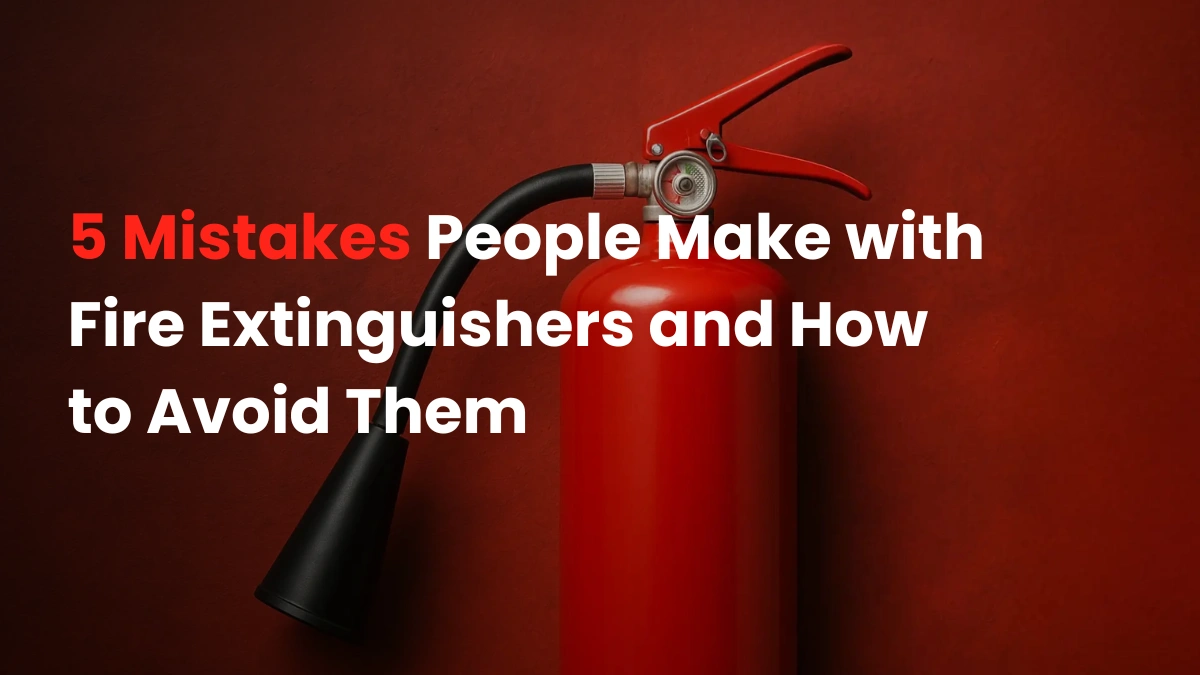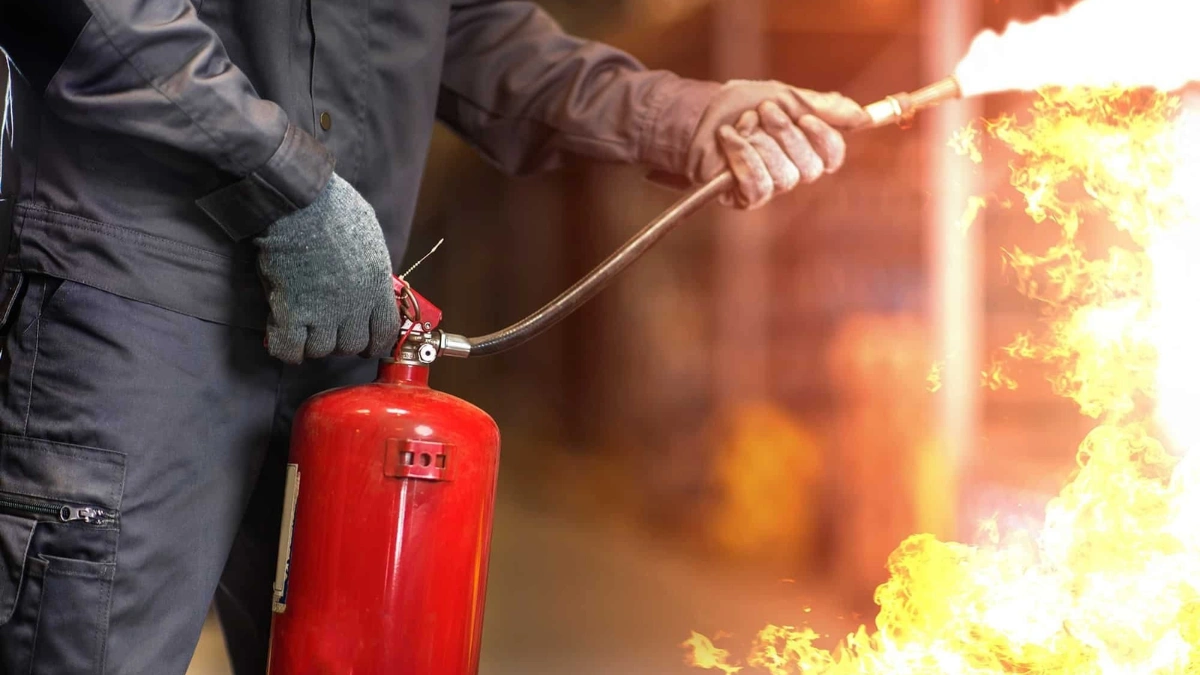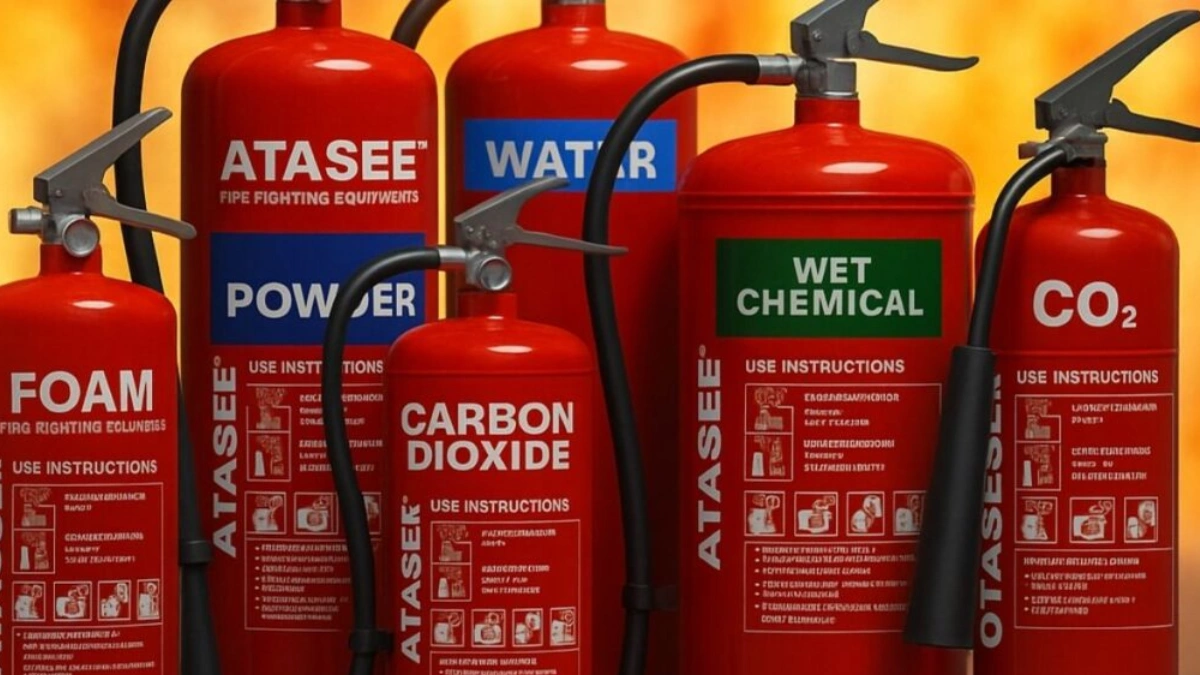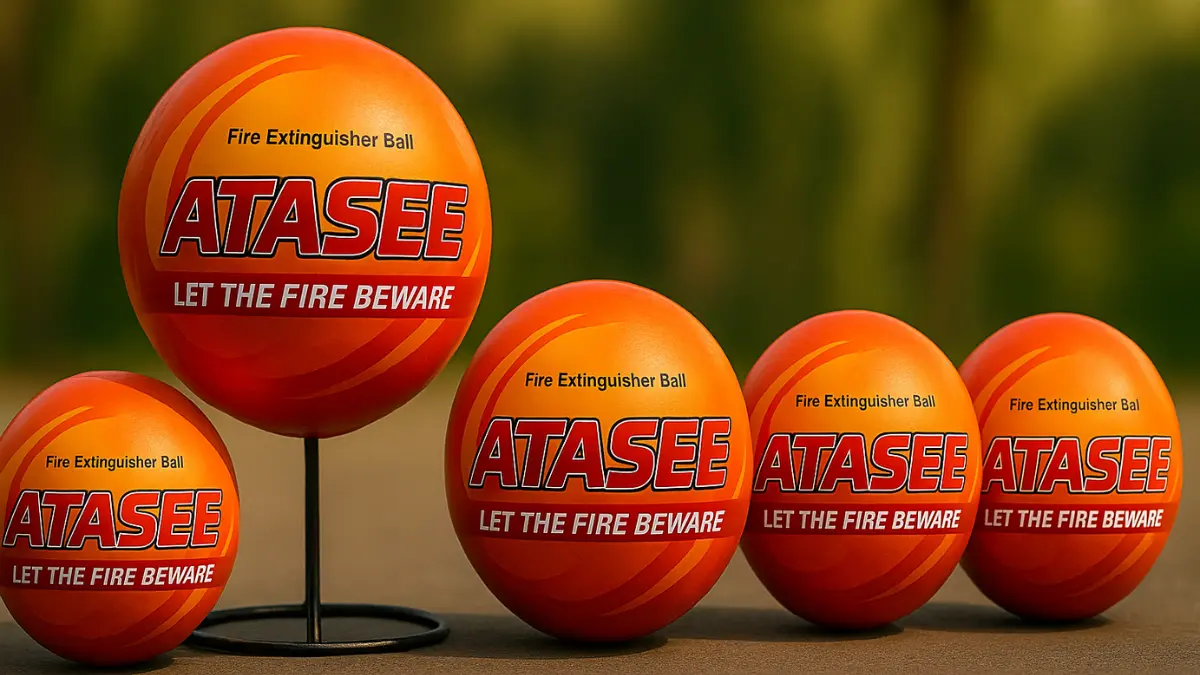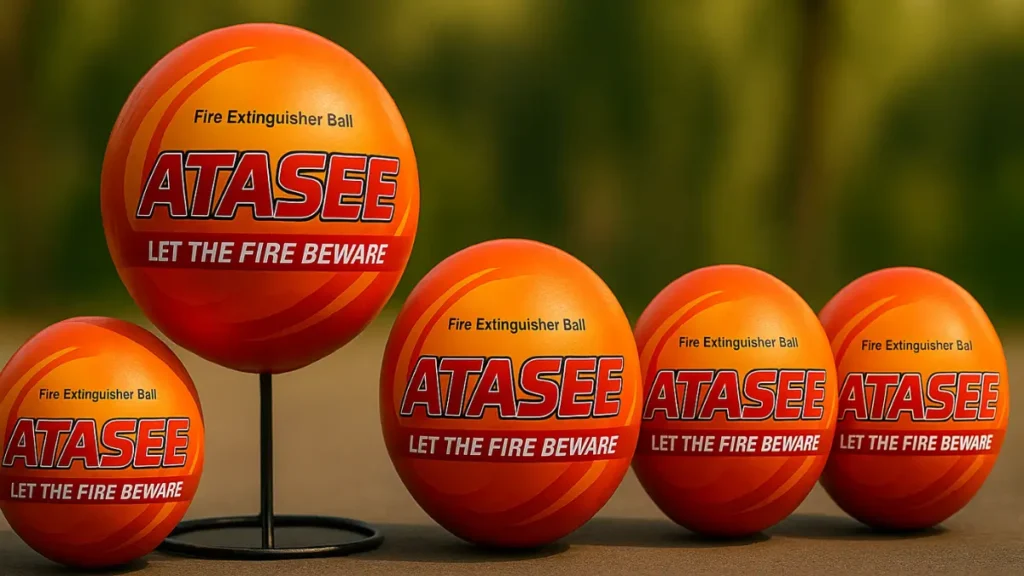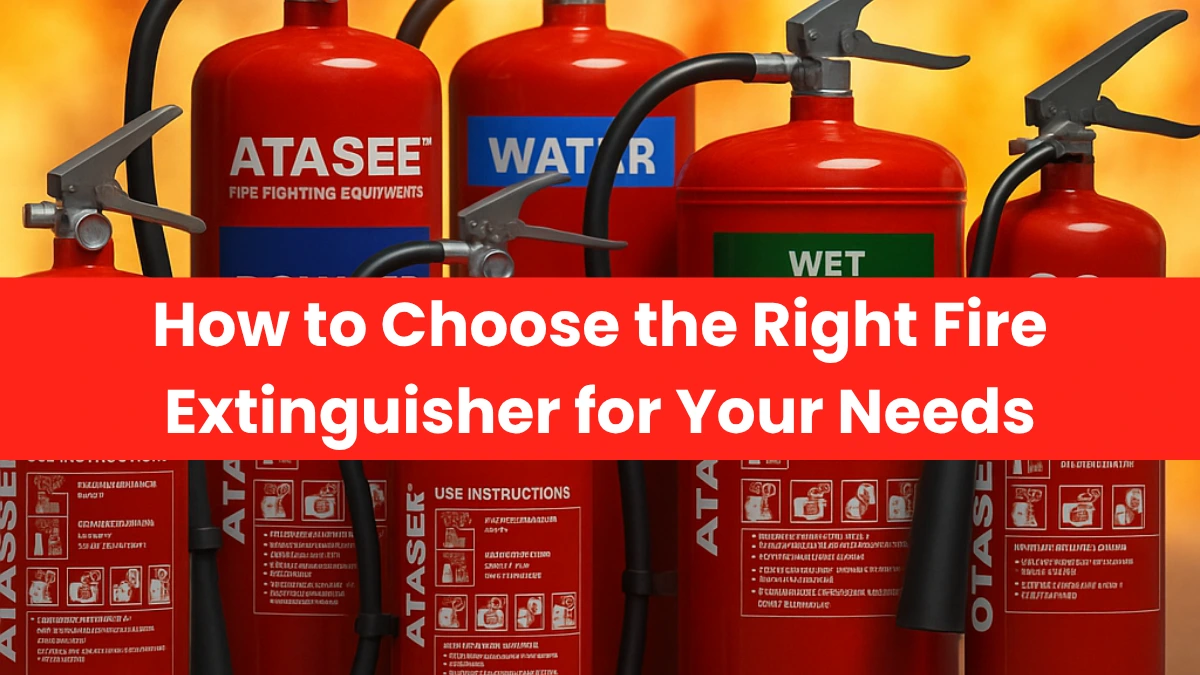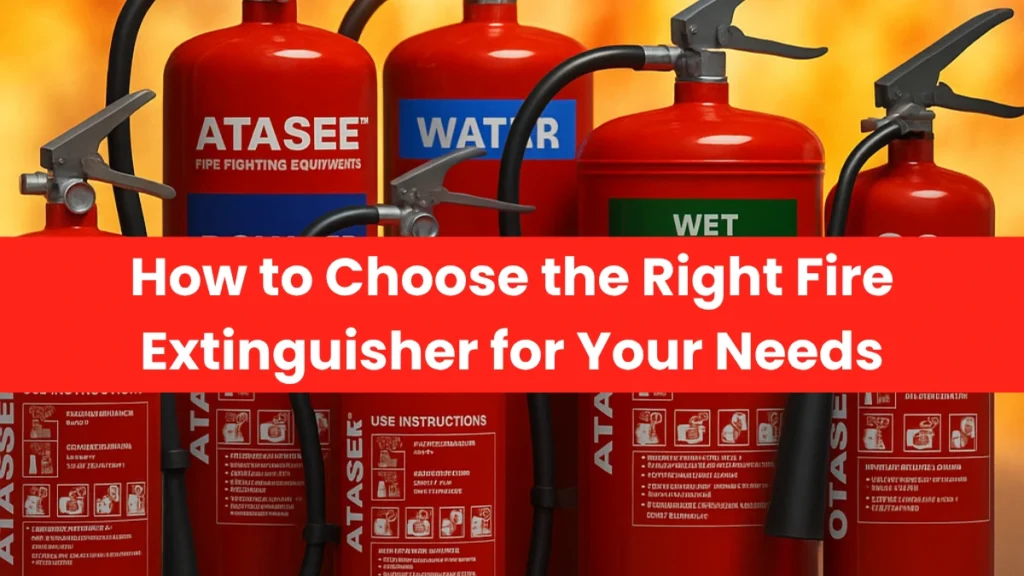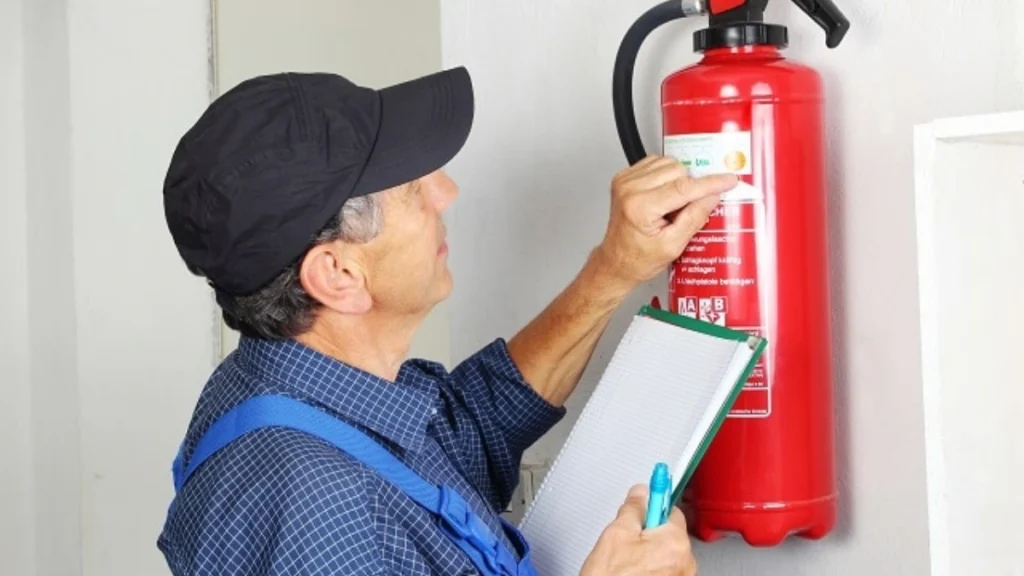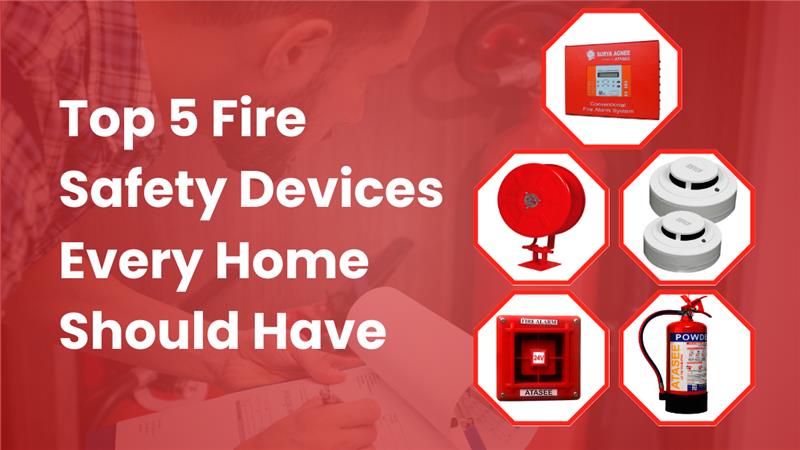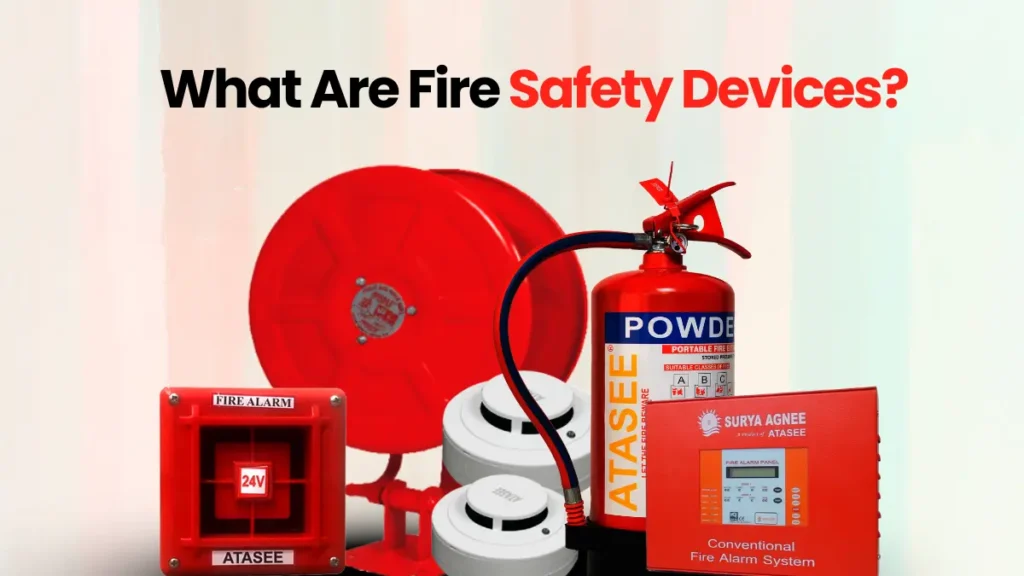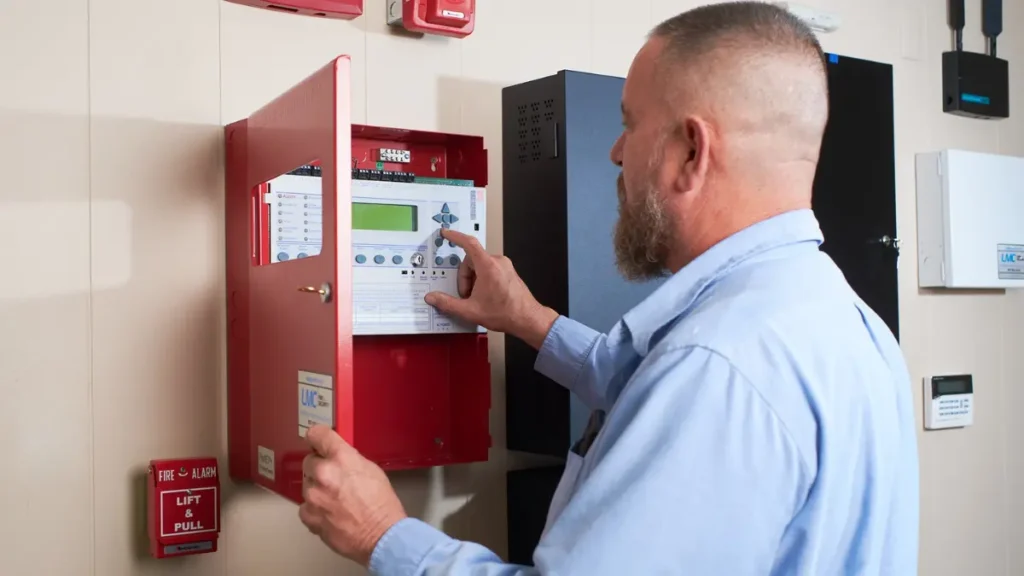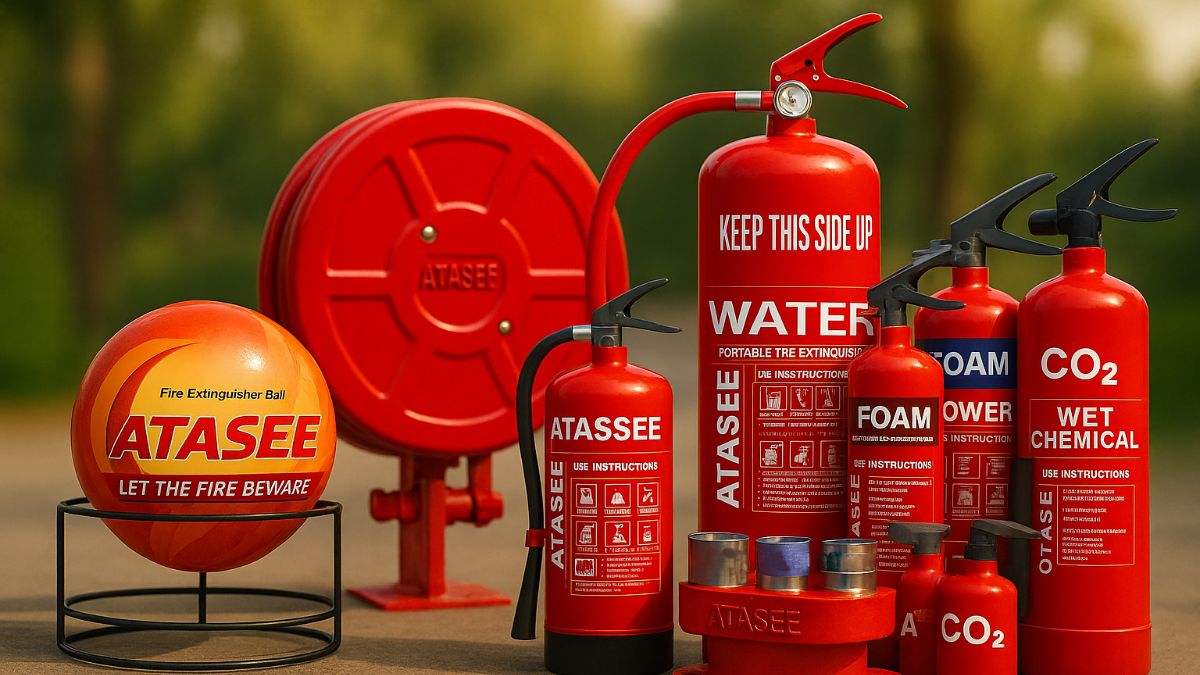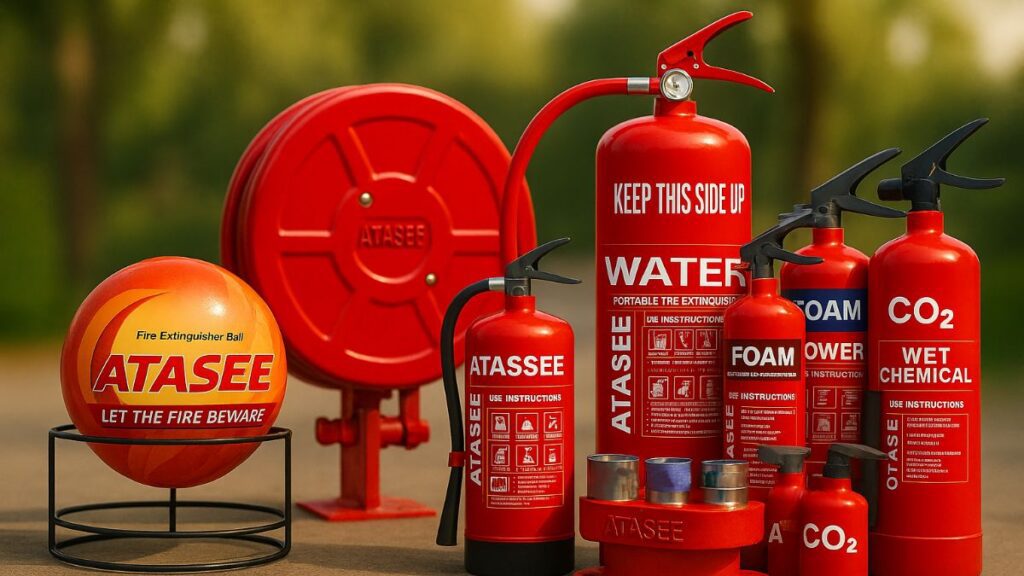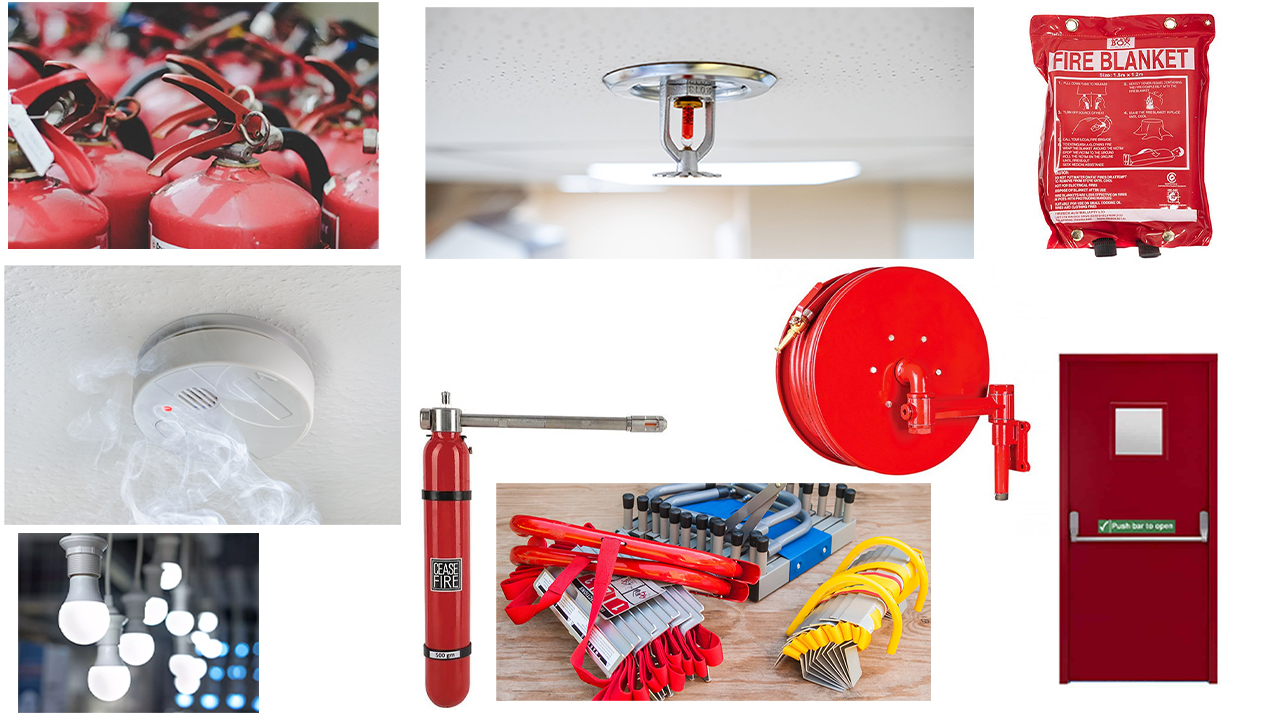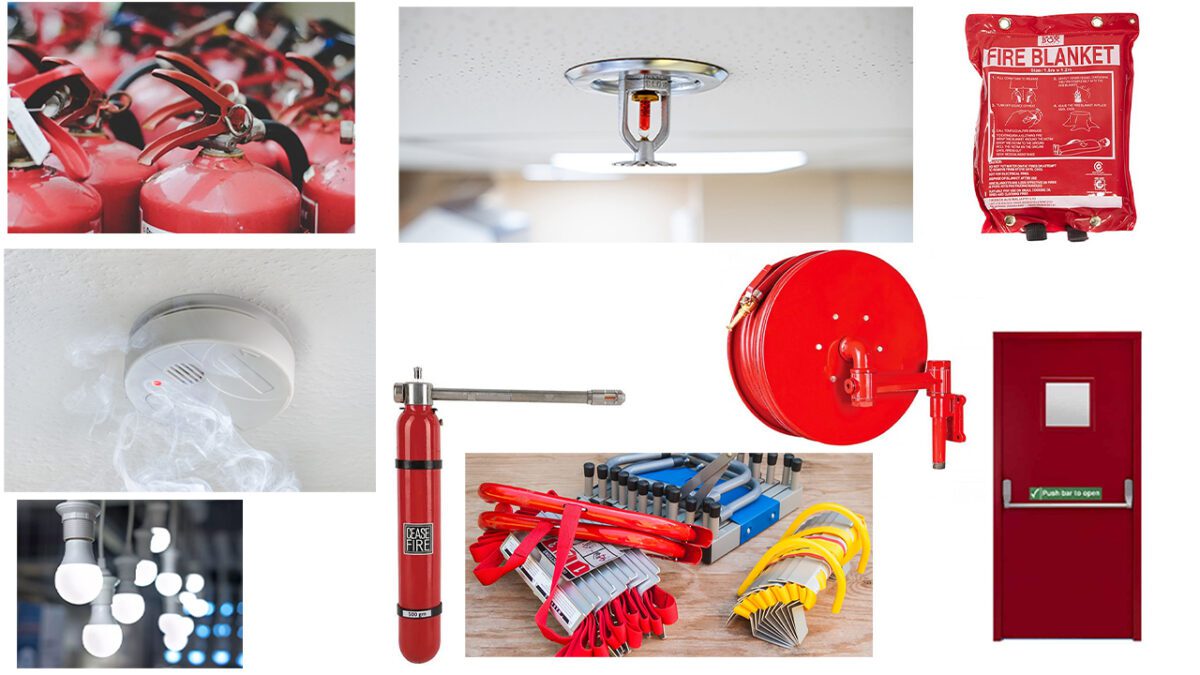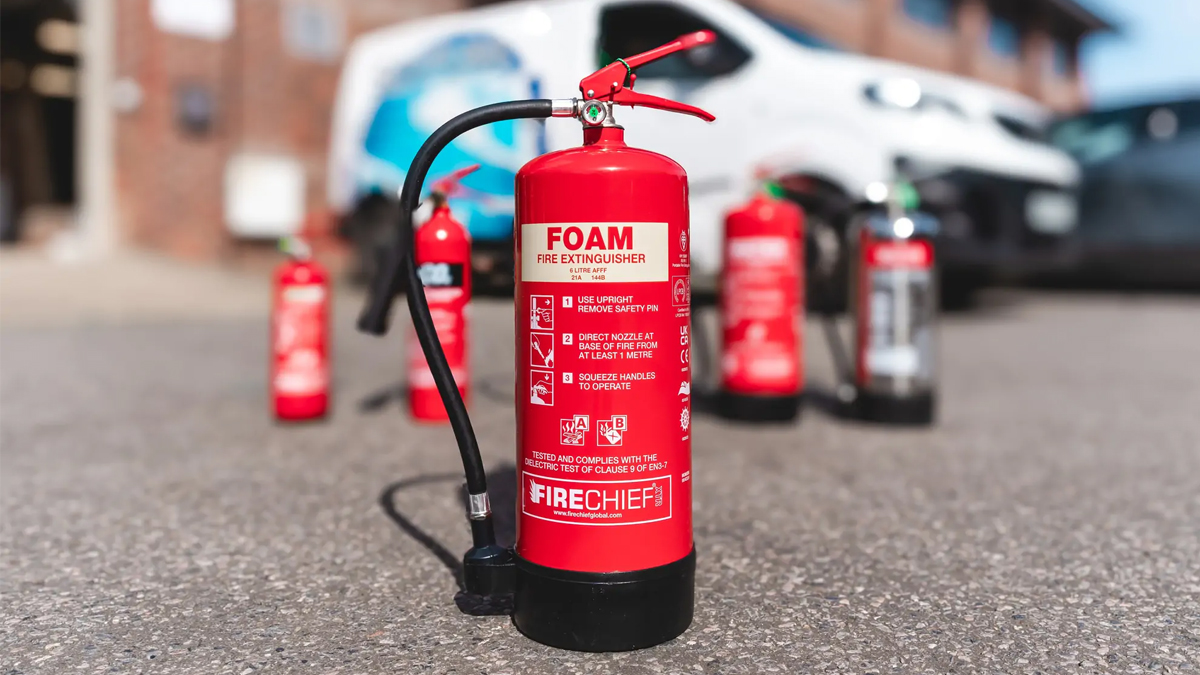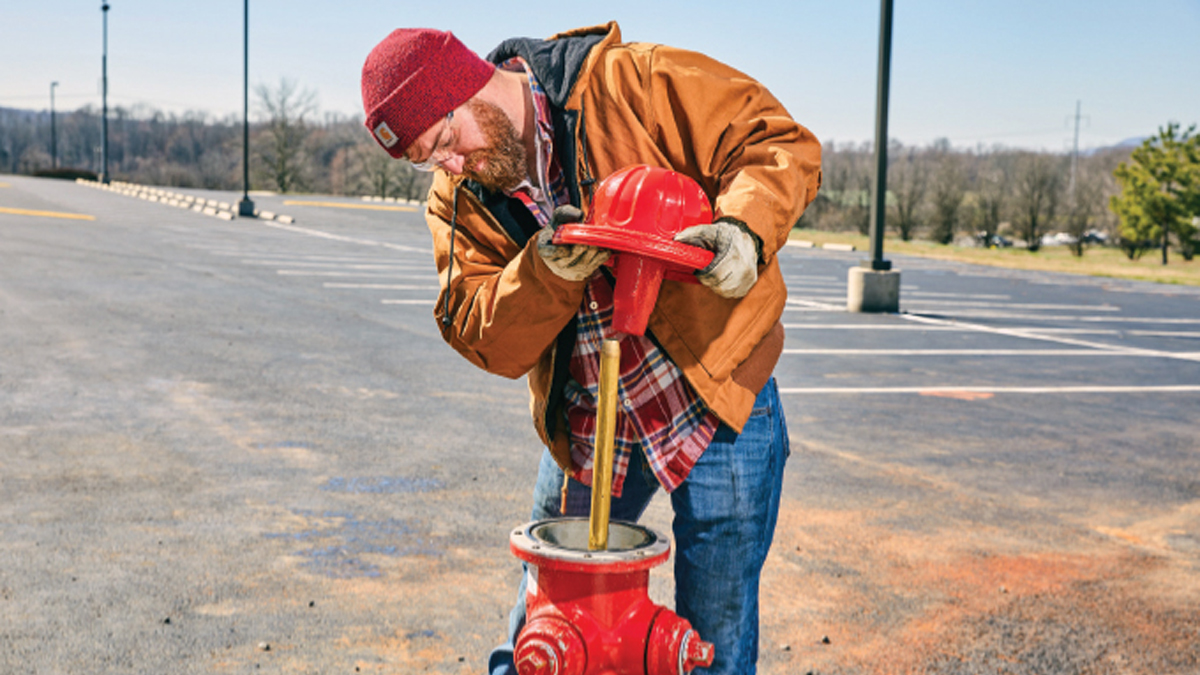Hey, take a quick look around. “Fire Hydrants are everywhere”, on sidewalks, near buildings, and at the street corner, but it’s also true that we rarely pay attention to them until a fire emergency suddenly strikes. Many people in India assume all fire hydrants are the same old boring water spouts, but NO, they come in different sizes, shapes, types, fire hydrant uses, and safety tips.
Each fire safety tool comes with its own important mission to save the day. Whether it’s keeping your home safe, protecting your beautiful office, guarding a big factory, or your favorite area, fire hydrants work like a trusted hero that is always ready to spray water when things catch flaming.
Because when fire shows up uninvited, every second counts, and these safety systems help firefighters act fast to save lives and valuable property. In this article, we’ll understand the top 7 Fire Hydrant Types, Uses, and Safety Tips.
Plus, we’ll uncover how they really work, because when it comes to fire safety, prevention beats cure every time! Knowing this can help you to stay safe, protect your property, and build the confidence to act quickly when time is pure gold. Additionally, this guide will give you the knowledge to make fire safety a top priority.
5 Mistakes People Make with Fire Extinguishers and How to Avoid Them
What is the Fire Hydrant System?

A fire hydrant system is a tough and specially designed water outlet made up of pipes, valves, water storage tanks, and pumps. By being strategically located in various locations (urban areas, large buildings, and industrial sites ), it directly connects to the underground water supply chain.
During a dangerous fire emergency in a location, it provides large amounts of water quickly to save people and protect property. Besides, maintaining of fire hydrant system is very crucial for best performance in risky situations.
Top 6 Reasons Why Fire Hydrant Systems Are Crucial for Safety
- Fire Hydrants provide immediate water access to firefighters.
- Preventing rapid fire spread and protecting lives.
- Supporting Firefighting Equipment so firefighters can operate effectively.
- Reduce firefighting costs and insurance claims by limiting fire damage.
- Andotary Compliance with Safety Regulations.
- Contributes to Public Safety.
List of 7 Types of Fire Hydrants
| Fire Hydrant Types | Common Use / Location |
| Internal Fire Hydrant System | Fire hydrant system in buildings and Areas |
| External Fire Hydrant System | Street or Near the Property |
| Wet Barrel Hydrant | Warm climates |
| Dry Barrel Hydrant | Cold climates |
| Standpipe (Pillar) Hydrant | Urban & industrial areas |
| Underground Hydrant | High-traffic areas |
| Flush Hydrant Airports | Parking lots |
Internal Fire Hydrant System VIP Body Guard of the Building

Internal fire hydrants are the hidden guardians of your building that are designed to supply water to interior areas like hallways, stairwells, and common zones. They must have for big buildings where fire can spread faster than gossip in an office cafeteria.
With this, fire crews can access water directly on each floor or section, save precious time by connecting to external hydrants. This is particularly useful in fire emergencies in large buildings where every second matters
Common Uses of Internal Fire Hydrant Systems – Why They’re the Building’s BFF
- Provide immediate fire response by quick access to water
- Ensure a water supply on every floor of the building
- Support fire crews by reducing the time and effort
- Prevent flames from spreading to other parts
- Offer fast firefighting solutions
External Fire Hydrant System Street Side Heroes of Fire Fighting
Known as street-side heroes of firefighting that generally located outside of buildings, on sidewalks, or near property entrances. It is highly used by fire trucks and firefighters who work at ground level.
When the fire spread, the fire team simply connected their hoses and got quick water access. They’re especially vital in urban areas, industrial zones, and outdoor spaces.
Common Uses of Internal Fire Hydrant Systems -How They Save the Day!
- Efficient Firefighting at street level.
- Handling higher risk zones.
- Provide large-scale outdoor protection.
- Support internal systems.
- Used for Fire Training Drills.
Wet Barrel Hydrant The Fire Fighter Real Buddy
A Wet Barrel Hydrant is a type of water fountain designed for use in areas where freezing temperatures are rare. It maintains a constant supply of water inside its above-ground barrel at all times, even when no one is around. Because it is always filled and pressurized, allowing firefighters quick access to water to save every second.
Essential Uses of Wet Barrel Hydrants in Fire Protection
- Perfect for Warm cities.
- Reliable water access to airports and industrial zones.
- Urban cities and neighbourhoods.
- Emergency use in parks and public spaces.
- Fast and efficient in marine and post areas.
Dry Barrel Hydrant — The Winter Warrior of Fire Hydrants!
A dry barrel hydrant is a type of smart fire hydrant crafted to control cold climates where freezing temperatures occur. Firefighters use it by opening a valve, and after that, water rushes from below that is ready to fight fire on winter days. So, dry barrel hydrants are the frost-proof Fire heroes ensure water is never frozen solid when emergencies strike in icy places!
Practical Uses of Dry Barrel Fire Hydrants
- Perfect for cold and snowy cities
- Fire Safety in Mountain Towns and Ski Resorts
- Keeping homes safe from frozen hydrants
- Rural and Suburban Zones
- Ensure Industrial Areas in Frosty Regions are safe in the chilliest weather conditions
Standpipe (Pillar) Hydrant — The Firefighter’s Handy Pillar!
Also called Piller Hydrants, a standpipe hydrant is a kind of small Fire suppression towers that stand similar to a pillar right above ground and is directly connected to the water supply system. It is often used inside buildings, parking garages, or tight spots, simply in places where water access can’t be compromised. So, firefighters need easy access to water quickly without wasting precious time.
Where are Standpipe (Pillar) Hydrants Used?
- Battling fires Inside High-Rise Buildings
- Easy water access in the parking garage
- Tight spots like tunnels and underground areas where fire safety can’t break through
- Firefighting in Industrial Facilities & Warehouses
- Placed in Shopping Malls & Commercial Complexes to reach quickly during emergencies.
Underground Hydrant –The Secret Water Ninjas
Next, fire hydrant types “underground Hydrant”. The main point of water valve and connection point are installed below ground level, making them ideal for places where aesthetics, space, or impractical climate. Usually, most of its key components are hidden below the surface (underground) to protect them from risky weather conditions (more hot days and cold days) or potential dangers. When firefighters need them, they open the hydrant from above ground using special tools to fast access the water supply.
Key Uses of Underground Hydrant
- Park and fancy neighbourhood where a nice area look is important.
- Busy Airports and small factories are where space is limited.
- Small or crowded places like streets and markets.
- Cold and bad weather to protecting fire hydrants.
- Historical sites and tourist spots.
Flush Hydrant Airports – Fire Safety’s Hidden Hero
Say hello to Flush hydrants, that is a special hidden fire safety tool. It sits almost flush with the ground, meaning they don’t stick up. This makes them a perfect match for busy airports where large vehicles need open, clear, unobstructed paths.
Because they’re low-profile, when the heat is on, flush hydrants come into action and reduce the risk of damage from heavy equipment, and keep the airport grounds safe and smooth.
Common uses of Flush Hydrant Airports
- Quick water access on busy airports and taxiways.
- Reliable water supply in critical areas.
- Safe ground operations without obstacles.
- Keeping the pathway open and clear for heavy vehicles.
- Reducing the risk of damage to heavy airport equipment.
Top 10 Fire Hydrant Safety Tips You Must Know
Safety Tip 1: Keep It Clear From Obstacles (parked cars, snow, bushes, Or Trash)
Hey readers, ensure that fire Hydrants are free from obstacles so firefighters can reach them quickly during a fire emergency.
Safety Tip 2: Report Immediately of Damages or Leaks of Fire Hydrants
Being a conscious Indian citizen, regularly notice nearby leaking or broken damaged hydrants. Don’t forget to immediately report to the nearby fire department or any local authority for safety assurance.
Safety Tip 3: Don’t Play With Hydrants Because It May Reduce Pressure
To operate Fire hydrants, proper training is needed because they aren’t toys. Unauthorized use can cause reduced water pressure or damage.
Safety Tip 4: Spot ‘Em Bright For Better Visibility At Night
Bright colors and lights can help make hydrants easy to find for the emergency crew. Use high-shine reflective paint so firefighters can easily spot them in darkness or bad weather.
Safety Tip 5: Protect Fire Hydrants in Winter to Prevent Freezing and Blockage
Usually, Cold weather creates snow and ice, which can cause freezing and blockage around the fire hydrant. Clear it because a frozen hydrant can delay fire safety.
Safety Tip 6: Know Your Hydrant, Be Fire Smart!
If you are building residents, managers, or community leaders, always know where with nearby hydrants are because it helps in emergency situations
Safety Tip 7:Use Hydrants Only in Fire Emergencies, Not For Water Parties
It is only for safety purposes; never use fire hydrants for non-emergency purposes like filling pools or washing cars. This overcomes the pressure of water availability when the fire is flaming.
Safety Tip 8: Please Avoid Connecting Unapproved/ Unnamed Equipment
Don’t use the wrong stuff. Only use strictly approved firefighter hoses and fittings on fire hydrants to prevent damage and ensure 100% safety.
Safety Tip 9: Educate Children About Hydrant Safety and Fire Emergencies
Hey, people, always teach kids in society not to play around fire hydrants. Explain to them that they are emergency equipment that is used in risky situations, not typical playground toys.
Safety Tip 10: See Something Wrong? Immediately Report Suspicious Activity Nearby
If you find someone who is trying to misuse a fire hydrant or using it for no reason. Call the society manager or notify authorities now, because fire safety is only for emergencies, not for playing.
How to Choose the Right Fire Hydrant System?
Have a look at the tips to choose the right fire hydrant system:
- Identification: Identify the size, type, use, risk, and coverage needs.
- Understand the Tool: Learn about local fire safety codes for clarity.
- Location Which Suits: Decide on the Hydrant type that suits your preferred location.
- Water Supply Chain: Ensure a reliable water supply for better safety.
- Quality Assurance: Choose quality key components in fire hydrants ( ISI, UL, or FM certified).
- Choose Location: Plan Hydrant Locations Strategically to Avoid Obstruction in an Emergency.
Conclusion
Fire safety is essential; we often ignore the tools and rarely know how to use or maintain them. In this article, we will describe Fire Hydrant Types, Uses, and Safety Tips to help you stay alert and prepared when any emergency strikes. We will also share basic knowledge on the reason why choosing Fire Hydrants matters, along with an FAQ section. Besides, buying a Fire Hydrant is a crucial decision.
While many companies in the market manufacture fire safety tools, Atasse is counted among the leading Fire Hydrant manufacturers and suppliers in India, known for delivering high-quality fire safety products at an effective cost.
People Also Ask
Who is the best manufacturer and supplier of Fire Hydrants?
Choose Atasee Best Fire hydrant manufacturer and supplier in India. They are known for innovative hydrants, durability, top-performance fire safety tools, and best production.
Who is responsible for installing fire hydrants?
People have a responsibility to maintain fire hydrants. But in a public area, local municipal bodies such as fire departments are responsible for installing fire hydrants. On the other hand, in private buildings and complexes building owner, developer, or facility manager (with approval from local authorities) is responsible.
How to design a fire hydrant system?
Understand Demand: Calculating water demand and pressure requirements of fire hydrants.
Coverage: For maximum coverage, map hydrant locations
Right Location: Choosing the right hydrant type for your location (wet, dry, underground, etc.)
Design Layout: For best access, design pipe layouts.
Follow safety Standards: Following local fire safety codes, tips, and standards.
How do fire suppression hydrants get water?
They are directly connected to the municipal water main or a dedicated fire water tank. For firefighting, it is opened by an experienced firefighter, and water flows through hidden pipes under high pressure.
Why I choose Atasee Best Manufacturing Company for Fire Hydrants?
Atasee is a Top Fire hydrant manufacturing company in India. Here are the reasons to choose:
Comprehensive fire safety products.
GMP production unit.
24*7 customer support.
Rich experience and strong regional presence in the market.
Provide quality assurance and compliance.


